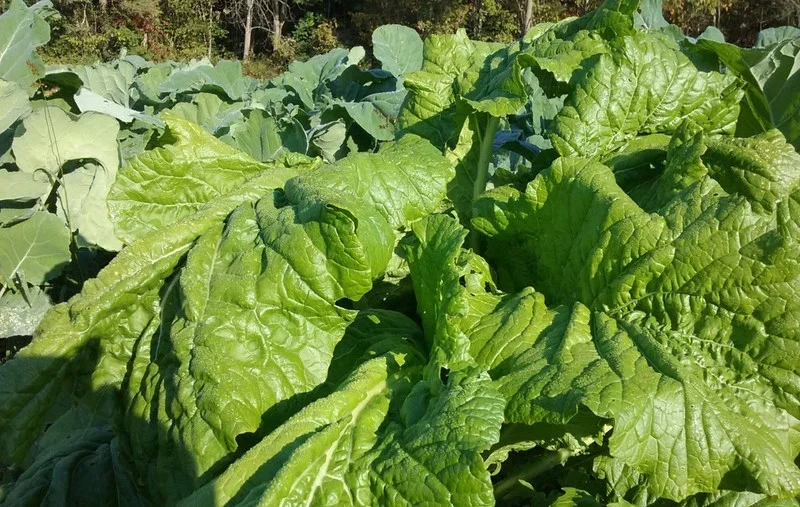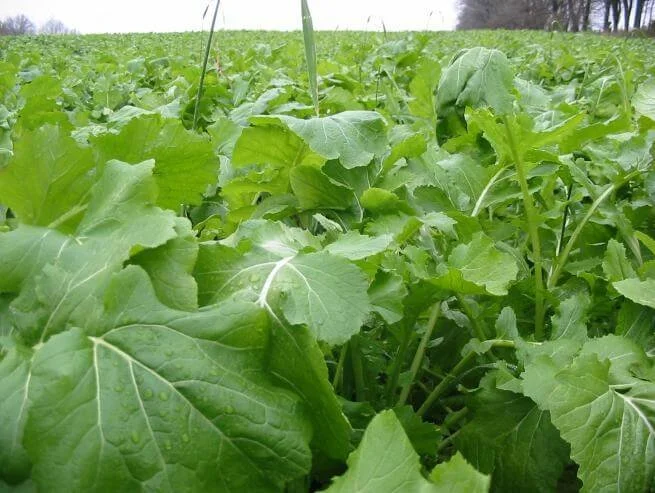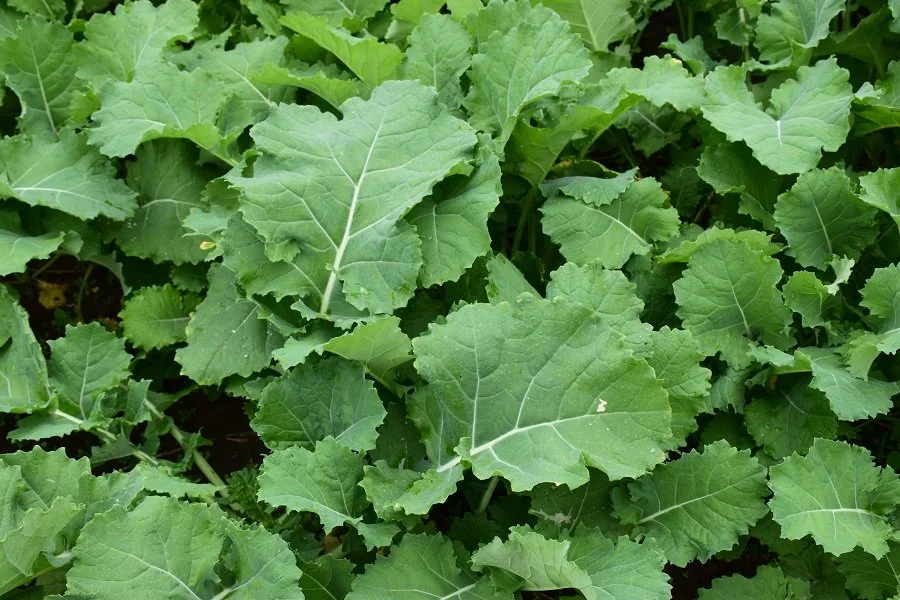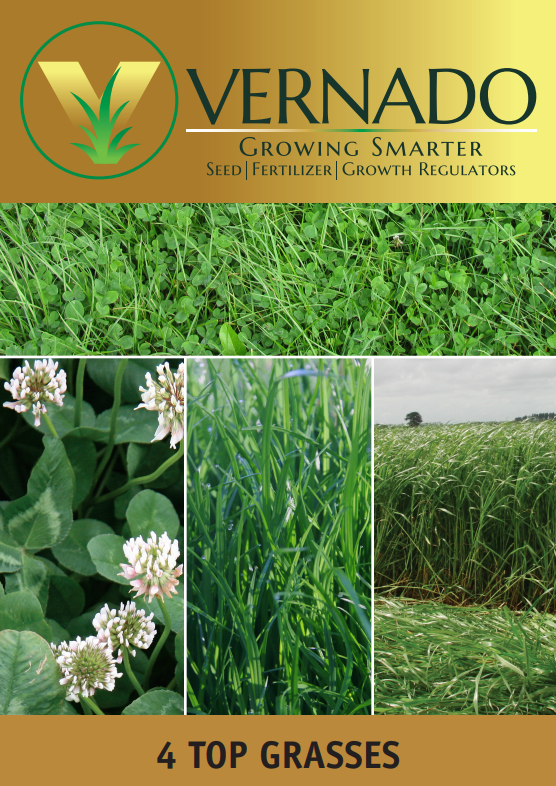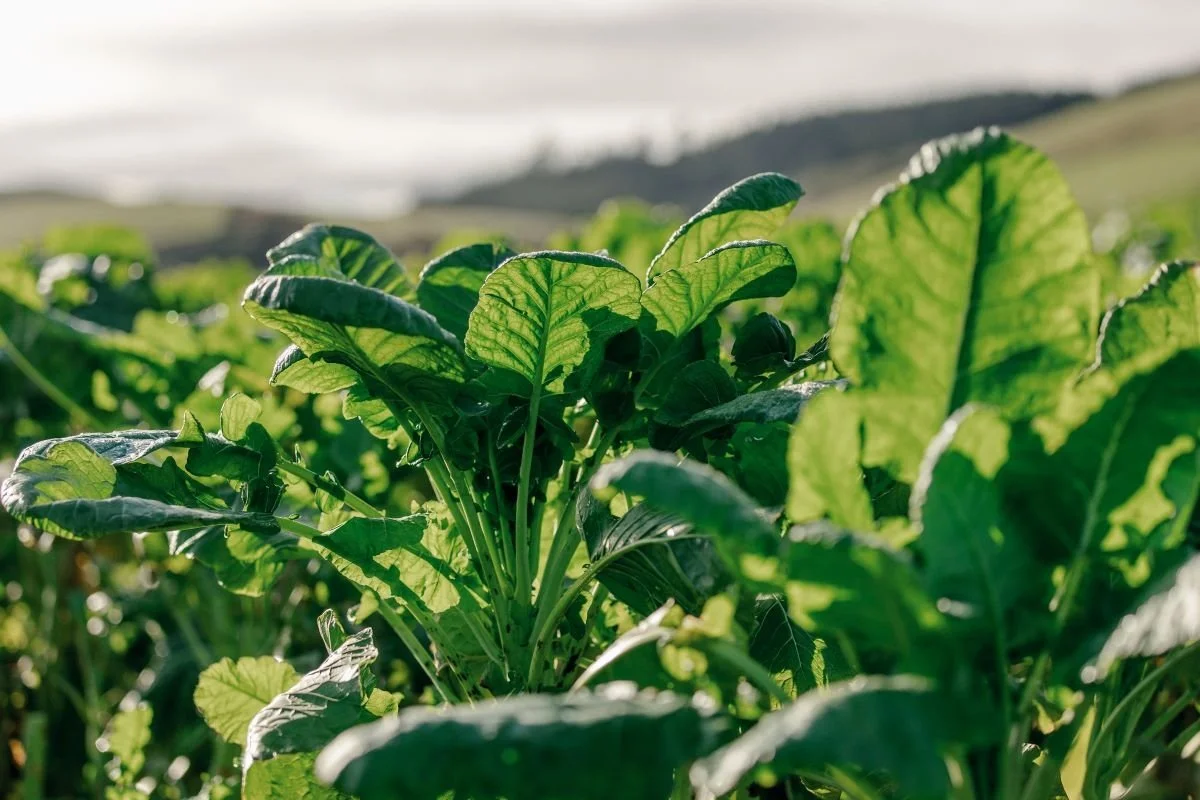
Brassica’s
Forage that drives seasonal animal performance
Pulsar Forage Rape
Ready to graze in ~10–14 weeks;
Flexible use: summer finishing or
autumn–early winter feed;
Suits cattle, sheep, deer;
Maturity: ~90 days;
Sowing season: Oct–Feb;
Sowing rate (sole): 4–6 kg/ha;
Yield potential: ~12 t DM/ha.
Variety's of Brassica’s
Forage Kale
Medium–tall, late-flowering, high leaf:stem;
Maintains leafy crop into late winter/early spring;
Thin-stemmed; suits cattle and sheep;
Maturity: ~150–220 days;
Sowing season: Oct–Jan;
Sowing rate (sole): 4–5 kg/ha;
Typical yield: 12–14 t/ha (up to ~18 t/ha with management).
Fodder (Tillage) Radish
Deep-rooted; breaks compaction and improves drainage/air movement;
Fast-growing annual; avoid late autumn sowing;
Smothers weeds with dense canopy; not strictly winter-hardy;
Strong above- and below-ground biomass;
Sowing season: Oct–Jan;
Sowing rate: 6–8 kg/ha (sole) or 1–2.5 kg/ha (mix).
Swede
Yellow-fleshed, purple-skinned, soft bulb; ~70%+ above ground for utilisation;
Suits all stock classes;
Days to grazing: ~170–200;
Sowing season: Nov–Dec;
Sowing rate: 1.0 kg/ha (20 cm rows)
or 1.5 kg/ha broadcast
Forage Kale
Medium–tall, late-flowering, high leaf:stem;
Maintains leafy crop into late winter/early spring;
Thin-stemmed; suits cattle and sheep;
Maturity: ~150–220 days;
Sowing season: Oct–Jan;
Sowing rate (sole): 4–5 kg/ha;
Typical yield: 12–14 t/ha (up to ~18 t/ha with management).

